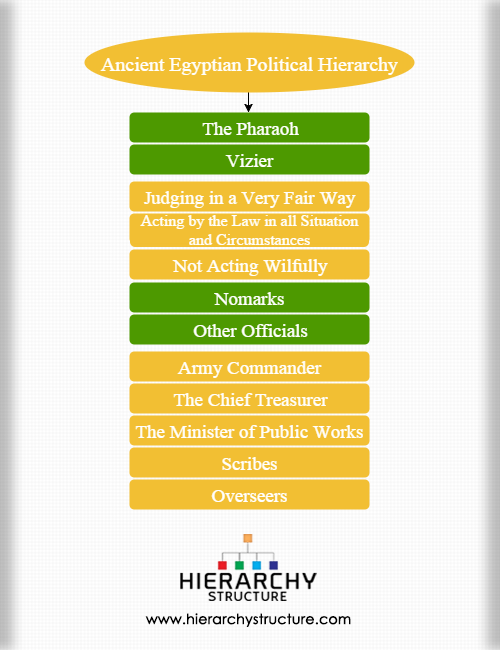During the ancient Egyptian days, the country was run different from how it is run today. However the political structure even then was divided into different levels and responsibilities were divided according to a hierarchical structure. The powerful officers formed a structure and were responsible for fulfilling the political duties.
Starting from the Pharaoh, who was the supreme leader and head of the political system, there were many official appointed at different positions. If you wish to understand more about the ancient Egyptian political hierarchy, you can go through the information which has been given below.
The Pharaoh
The Pharaoh was the supreme leader and also the head of the government during ancient Egyptian days. He was not only in charge of the political system and governance of people but also of the Egyptian religious hierarchy of the land in those days too. He was the most powerful man who was responsible for giving instructions and also for making sure there was someone or the other was appointed to fulfil other governance related duties and task. He had several officials employed under him and they are given as follows:
Vizier
At the position next to the Pharaoh was that of the Vizier who worked as the right hand of the supreme leadership in ancient Egypt and was basically the Chief Overseer of the land. He had many responsibilities to fulfil and one among them was to see to it that the land operations were smooth and all citizens were happy. His responsibility was similar to that of the Prime Minister of current times. Many officials and others reported to him on many matters. The Vizier was responsible for:
- Judging in a very fair way
- Acting by the law in all situations and circumstances
- Not acting wilfully
Nomarks
At the third highest position in the ancient Egyptian political hierarchy were the Nomarks or the local governors who were given the task of administering certain regions which were termed as nomes. These individuals were just responsible for the supervision and governance of their own area and worked under the common rule of the Vizier. A Nome was nothing but a state or a kind of a province.
Other officials
In the political hierarchy of the ancient Egyptian people, there were many other officials too who worked under a level lower than that of the Nomarks. These officials too were appointed by the pharaoh and also reported to him directly. They were given specialised tasks and were responsible for completing them honestly. They formed an important part of the governance. Some of these officials were as follows:
- Army commander-he headed the military or army in those days.
- The chief treasurer-he was responsible for the finances of the land and everything related to money matters.
- The minister of public works-he worked for the welfare of the people and set up establishments.
- Scribes-they kept record of taxes, cense and finances.
- Overseers-they kept track and record of the farmers and their needs.

